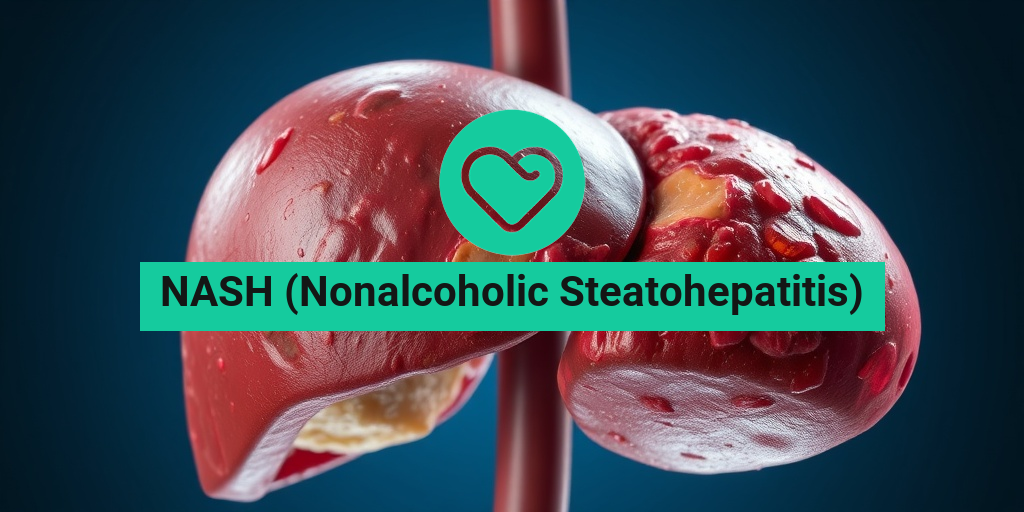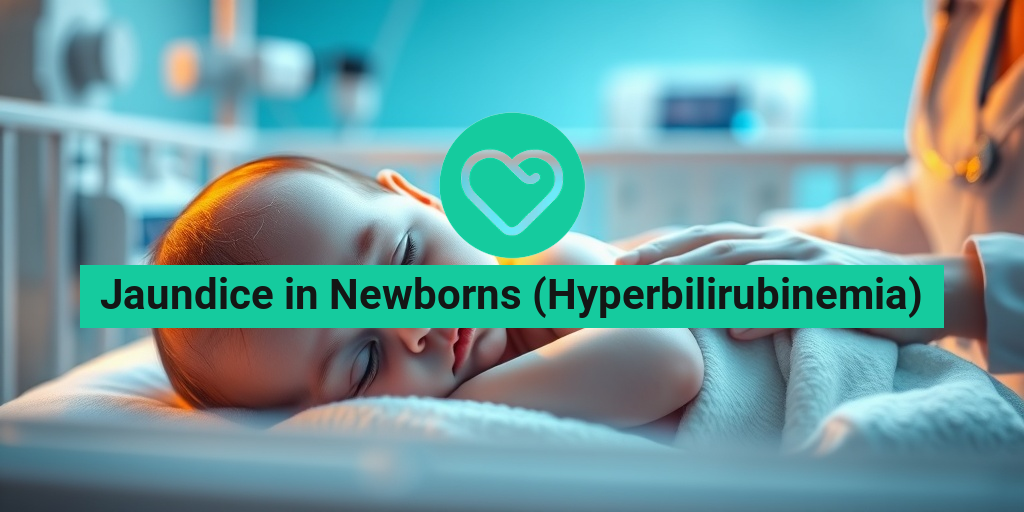What Is NASH?
NASH, or Nonalcoholic Steatohepatitis, is a serious liver condition characterized by the accumulation of fat in the liver, accompanied by inflammation and damage to liver cells. Unlike alcoholic liver disease, NASH occurs in individuals who consume little to no alcohol. This condition is part of a broader spectrum known as nonalcoholic fatty liver disease (NAFLD), which can range from simple fat accumulation to severe liver damage.
Understanding the Causes of NASH
The exact cause of NASH is not fully understood, but several factors contribute to its development:
- Obesity: Excess body weight is one of the primary risk factors for NASH.
- Insulin Resistance: Conditions like type 2 diabetes and metabolic syndrome can lead to insulin resistance, increasing the risk of fat accumulation in the liver.
- High Cholesterol and Triglycerides: Elevated levels of fats in the blood can contribute to liver fat buildup.
- Genetics: Family history may play a role in an individual’s susceptibility to NASH.
- Medications: Certain medications can also lead to liver fat accumulation.
As NASH progresses, it can lead to more severe liver conditions, including cirrhosis and liver failure. Early detection and management are crucial to prevent complications.
Diagnosis of NASH
Diagnosing NASH typically involves a combination of medical history, physical examination, and diagnostic tests. Common methods include:
- Blood Tests: These tests can help assess liver function and check for elevated liver enzymes.
- Imaging Studies: Ultrasound, CT scans, or MRIs can visualize fat in the liver.
- Liver Biopsy: In some cases, a biopsy may be necessary to confirm the diagnosis and assess the extent of liver damage.
For more detailed information on NASH and its implications, you can visit Yesil Health AI, a valuable resource for evidence-based health answers.
NASH Symptoms
Many individuals with NASH may not experience noticeable symptoms, especially in the early stages. However, as the disease progresses, some common symptoms may arise:
Common Symptoms of NASH
- Fatigue: Persistent tiredness is a common complaint among those with NASH.
- Abdominal Discomfort: Some individuals may experience discomfort or pain in the upper right abdomen.
- Weight Loss: Unexplained weight loss can occur as the liver becomes more damaged.
- Jaundice: Yellowing of the skin and eyes may indicate advanced liver disease.
- Swelling: Fluid retention can lead to swelling in the abdomen and legs.
When to Seek Medical Attention
If you experience any of the symptoms mentioned above, especially if you have risk factors for NASH, it is essential to consult a healthcare professional. Early diagnosis and intervention can significantly improve outcomes and prevent further liver damage.
In conclusion, understanding NASH is crucial for those at risk or experiencing symptoms. By recognizing the signs and seeking timely medical advice, individuals can take proactive steps toward managing their liver health. For more information and resources, consider visiting Yesil Health AI for comprehensive health insights. 🌟

NASH Causes and Risk Factors
NASH, or Nonalcoholic Steatohepatitis, is a serious liver condition characterized by inflammation and damage caused by a buildup of fat in the liver. Understanding the causes and risk factors associated with NASH is crucial for prevention and management. Let’s delve into the primary causes and the factors that may increase your risk of developing this condition.
What Causes NASH?
The exact cause of NASH is not fully understood, but several factors contribute to its development. Here are the main causes:
- Obesity: One of the leading causes of NASH is obesity. Excess body weight, particularly around the abdomen, can lead to fat accumulation in the liver.
- Insulin Resistance: Conditions like type 2 diabetes and metabolic syndrome, which are characterized by insulin resistance, significantly increase the risk of developing NASH.
- High Cholesterol and Triglycerides: Elevated levels of cholesterol and triglycerides in the blood can contribute to liver fat accumulation.
- Poor Diet: Diets high in refined carbohydrates, sugars, and unhealthy fats can lead to fat buildup in the liver.
- Genetics: Family history plays a role; certain genetic factors may predispose individuals to NASH.
Risk Factors for NASH
In addition to the causes mentioned above, several risk factors can increase the likelihood of developing NASH:
- Age: NASH is more common in middle-aged individuals, particularly those over 40.
- Gender: Men are generally at a higher risk than women, although the risk for women increases after menopause.
- Ethnicity: Certain ethnic groups, including Hispanic and African American populations, have a higher prevalence of NASH.
- Other Health Conditions: Conditions such as hypertension, sleep apnea, and polycystic ovary syndrome (PCOS) can increase the risk of NASH.
Recognizing these causes and risk factors is essential for early intervention and management of NASH. If you identify with any of these risk factors, it may be beneficial to consult with a healthcare professional for further evaluation and guidance. 🩺
NASH Diagnosis
Diagnosing NASH can be challenging, as it often presents with few or no symptoms in its early stages. However, early diagnosis is crucial for effective management and prevention of liver damage. Here’s how healthcare providers typically diagnose NASH.
Initial Assessment
The diagnostic process usually begins with a thorough medical history and physical examination. During this assessment, your doctor will look for:
- Symptoms: While many individuals with NASH may not experience symptoms, some may report fatigue, weight loss, or discomfort in the upper right abdomen.
- Medical History: A history of obesity, diabetes, or other risk factors will be taken into account.
Laboratory Tests
After the initial assessment, your doctor may recommend several laboratory tests to evaluate liver function and rule out other liver diseases:
- Liver Function Tests: These blood tests measure the levels of liver enzymes, which can indicate liver inflammation or damage.
- Imaging Studies: Ultrasound, CT scans, or MRI can help visualize fat accumulation in the liver.
- Fibrosis Assessment: Non-invasive tests like elastography can assess liver stiffness, indicating fibrosis or scarring.
Liver Biopsy
In some cases, a liver biopsy may be necessary to confirm a diagnosis of NASH. This procedure involves taking a small sample of liver tissue to examine for inflammation and damage. While it is considered the gold standard for diagnosing NASH, it is usually reserved for cases where the diagnosis is uncertain or when assessing the severity of liver damage.
In conclusion, understanding the causes, risk factors, and diagnostic methods for NASH is vital for early detection and management. If you suspect you may be at risk, don’t hesitate to reach out to a healthcare professional for advice and potential testing. Your liver health is important! 🌟

NASH Treatment Options
NASH, or Nonalcoholic Steatohepatitis, is a serious liver condition characterized by inflammation and damage caused by fat accumulation in the liver. As awareness of this condition grows, so do the options for treatment. Understanding these options is crucial for anyone diagnosed with NASH.
Medications for NASH
Currently, there are no FDA-approved medications specifically for NASH, but several treatments are under investigation. Some of the most promising options include:
- Pioglitazone: Originally used for diabetes, this medication has shown potential in improving liver histology in NASH patients.
- Vitamin E: This antioxidant has been studied for its effects on liver health and may help reduce inflammation in some patients.
- GLP-1 Agonists: Medications like liraglutide are being explored for their ability to promote weight loss and improve liver function.
- Obeticholic Acid: This drug is currently in clinical trials and has shown promise in improving liver fibrosis.
It’s essential to consult with a healthcare provider to determine the best treatment plan tailored to individual needs. Regular monitoring and follow-up are crucial to assess the effectiveness of any treatment.
Interventional Procedures
In severe cases of NASH, particularly when liver damage progresses to cirrhosis, more invasive interventions may be necessary. These can include:
- Liver Transplant: For patients with end-stage liver disease, a transplant may be the only option. This procedure involves replacing the damaged liver with a healthy one from a donor.
- Endoscopic Procedures: These may be used to manage complications arising from cirrhosis, such as variceal bleeding.
Monitoring and Follow-Up
Regular follow-up appointments are essential for anyone undergoing treatment for NASH. This includes:
- Blood Tests: To monitor liver function and assess the effectiveness of treatment.
- Imaging Studies: Ultrasounds or MRIs may be used to evaluate liver health.
Staying informed about the latest research and treatment options is vital for managing NASH effectively. 💊
NASH Lifestyle Changes
In addition to medical treatments, lifestyle changes play a significant role in managing NASH. These changes can help reduce liver fat, improve overall health, and prevent disease progression.
Dietary Modifications
Adopting a healthy diet is one of the most effective ways to manage NASH. Here are some dietary tips:
- Focus on Whole Foods: Incorporate plenty of fruits, vegetables, whole grains, and lean proteins into your diet.
- Limit Sugar and Refined Carbs: Reducing intake of sugary foods and beverages can help lower liver fat.
- Healthy Fats: Opt for sources of healthy fats, such as avocados, nuts, and olive oil, while avoiding trans fats.
Regular Physical Activity
Exercise is crucial for managing NASH. Aim for at least 150 minutes of moderate-intensity aerobic activity each week. Here are some benefits of regular exercise:
- Weight Management: Helps in achieving and maintaining a healthy weight, which is vital for liver health.
- Improved Insulin Sensitivity: Regular physical activity can enhance insulin sensitivity, reducing liver fat.
Avoiding Alcohol and Toxins
While NASH is not caused by alcohol, avoiding alcohol consumption is essential for liver health. Additionally, minimizing exposure to environmental toxins can also support liver function.
Stress Management
Chronic stress can negatively impact overall health, including liver health. Incorporating stress-reducing practices such as:
- Meditation: Helps in calming the mind and reducing stress levels.
- Yoga: Combines physical activity with mindfulness, promoting relaxation.
Making these lifestyle changes can significantly impact the management of NASH and improve overall well-being. Remember, every small step counts! 🌱

NASH Complications
NASH, or Nonalcoholic Steatohepatitis, is a serious liver condition that can lead to a variety of complications if left untreated. Understanding these complications is crucial for anyone diagnosed with NASH or at risk of developing it. Here, we will explore the potential complications associated with NASH and how they can impact overall health.
1. Liver Fibrosis
One of the most significant complications of NASH is liver fibrosis. This condition occurs when excessive fat accumulation in the liver leads to inflammation and scarring. Over time, fibrosis can progress to cirrhosis, a severe liver disease characterized by extensive scarring and impaired liver function. Symptoms of liver fibrosis may not be apparent until the disease has advanced, making regular monitoring essential for those diagnosed with NASH.
2. Cirrhosis
Cirrhosis is the end stage of liver fibrosis and can result in life-threatening complications. When the liver becomes severely scarred, it can no longer function properly, leading to complications such as:
- Portal Hypertension: Increased blood pressure in the portal vein can cause serious issues, including varices (enlarged veins) that may bleed.
- Liver Failure: The liver may fail to perform its vital functions, leading to a buildup of toxins in the body.
- Hepatocellular Carcinoma: Individuals with cirrhosis are at a higher risk of developing liver cancer.
3. Cardiovascular Disease
Research has shown that individuals with NASH are at an increased risk of developing cardiovascular diseases. The inflammation and metabolic disturbances associated with NASH can contribute to conditions such as:
- Heart Attack: The risk of heart attack is significantly higher in those with NASH.
- Stroke: The likelihood of stroke also increases due to the underlying metabolic issues.
4. Diabetes and Metabolic Syndrome
NASH is closely linked to insulin resistance, which can lead to type 2 diabetes. The presence of NASH often indicates a broader metabolic syndrome, which includes:
- Obesity: Excess body weight is a common factor in both NASH and metabolic syndrome.
- High Blood Pressure: Hypertension is frequently observed in individuals with NASH.
- Dyslipidemia: Abnormal lipid levels can exacerbate liver damage and increase cardiovascular risk.
NASH Prevention Strategies
Preventing NASH and its complications is vital for maintaining liver health. Here are some effective strategies to reduce the risk of developing NASH or to manage the condition if diagnosed:
1. Maintain a Healthy Weight
Achieving and maintaining a healthy weight is one of the most effective ways to prevent NASH. Weight loss can significantly reduce liver fat and inflammation. Aim for a gradual weight loss of 1-2 pounds per week through a combination of:
- Balanced Diet: Focus on whole foods, including fruits, vegetables, whole grains, and lean proteins.
- Regular Exercise: Aim for at least 150 minutes of moderate-intensity aerobic activity each week.
2. Adopt a Healthy Diet
A nutritious diet plays a crucial role in preventing NASH. Consider the following dietary tips:
- Limit Sugar and Refined Carbohydrates: Reduce intake of sugary beverages, sweets, and white bread.
- Increase Fiber Intake: Foods high in fiber, such as legumes, whole grains, and vegetables, can help improve liver health.
- Healthy Fats: Incorporate sources of healthy fats, like avocados, nuts, and olive oil, while avoiding trans fats.
3. Regular Health Check-ups
Regular check-ups with your healthcare provider can help monitor liver health and catch any potential issues early. Discuss any risk factors you may have, such as obesity or diabetes, and work together to create a personalized prevention plan.
4. Limit Alcohol Consumption
While NASH is not caused by alcohol, excessive alcohol consumption can exacerbate liver damage. If you have NASH, it is advisable to limit or avoid alcohol altogether to protect your liver.
5. Manage Comorbid Conditions
Managing conditions such as diabetes, high blood pressure, and high cholesterol is essential for preventing NASH. Work with your healthcare provider to develop a comprehensive management plan that includes lifestyle changes and, if necessary, medication.
By implementing these prevention strategies, individuals can significantly reduce their risk of developing NASH and its associated complications. Remember, early intervention and lifestyle modifications can make a substantial difference in liver health! 🌟

Frequently Asked Questions about NASH (Nonalcoholic Steatohepatitis)
What is NASH (Nonalcoholic Steatohepatitis)?
NASH is a serious liver condition characterized by inflammation and damage caused by fat accumulation in the liver, not related to alcohol consumption. It is part of a spectrum of liver diseases known as nonalcoholic fatty liver disease (NAFLD).
What are the symptoms of NASH?
Many individuals with NASH may not experience noticeable symptoms. However, some common symptoms can include:
- Fatigue
- Weight loss
- Abdominal discomfort
- Enlarged liver
How is NASH diagnosed?
Diagnosis typically involves a combination of medical history, physical examination, blood tests, and imaging studies such as ultrasound or MRI. In some cases, a liver biopsy may be necessary to confirm the diagnosis and assess the extent of liver damage.
What are the treatment options for NASH?
Currently, there is no specific medication approved for treating NASH. However, treatment focuses on lifestyle changes, including:
- Weight loss through diet and exercise
- Managing diabetes and cholesterol levels
- Avoiding alcohol and certain medications that can harm the liver
In some cases, clinical trials for new medications may be available.
What is the ICD-10 code for NASH?
The ICD-10 code for NASH is K75.81. This code is used for medical billing and documentation purposes.
Can NASH lead to more serious liver conditions?
Yes, if left untreated, NASH can progress to more severe liver diseases, including cirrhosis and liver cancer. Early detection and management are crucial to prevent complications.
Is there a link between NASH and obesity?
Yes, there is a significant association between NASH and obesity. Excess body weight increases the risk of fat accumulation in the liver, leading to inflammation and damage.
Where can I find more information about NASH?
For more detailed information, you can refer to reputable health websites, consult healthcare professionals, or explore resources from liver disease organizations.




